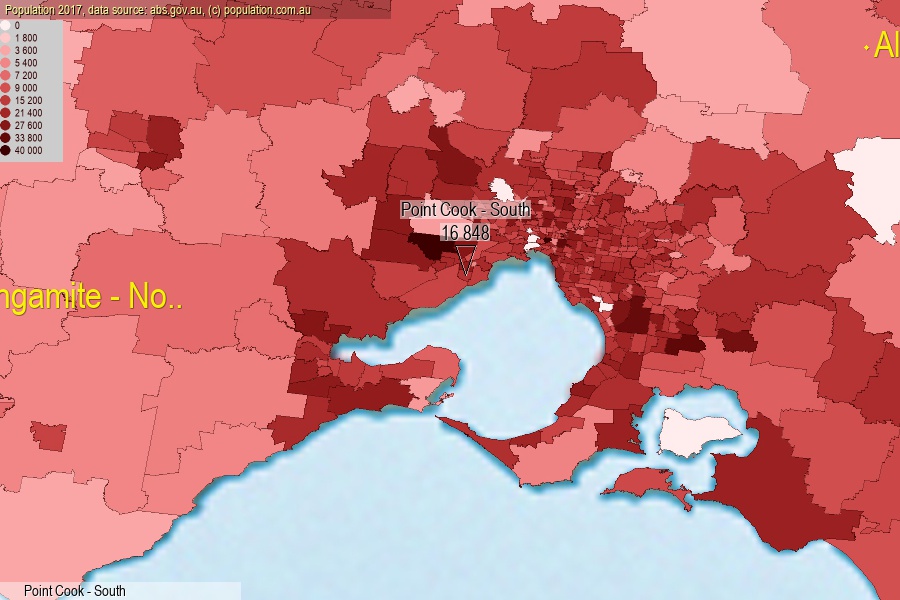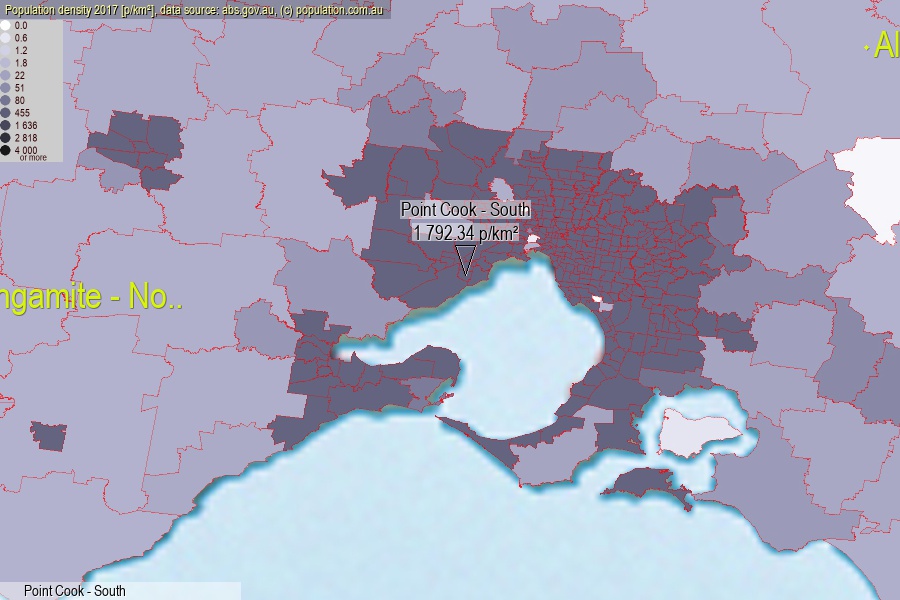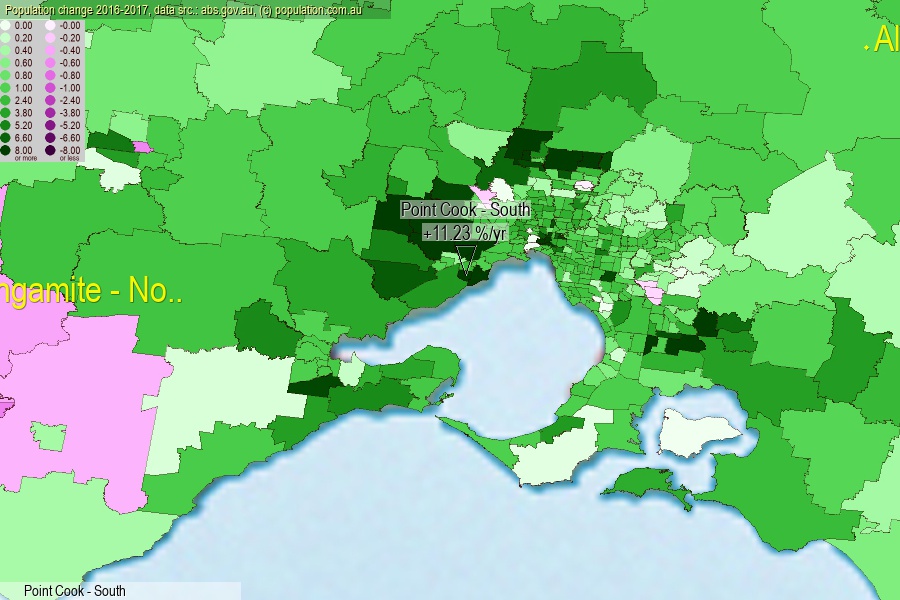 population.com.au
population.com.auLast official estimated population of Point Cook - South (as Statistical Area Level 2) was 16 848 people (on 2017-06-30)[2]. This was 0.07% of total Australian population and 0.262% of VIC population. Area of Point Cook - South is 9.40 km², in this year population density was 1 792.34 p/km² . If population growth rate would be same as in period 2016-2017 (+11.23%/yr), Point Cook - South population in 2025 would be 39 475. [0]



Click to enlarge. Point Cook - South is located in the center of the images.
Population [people], population density [p./km²] and population change [%/year] [2]
View borders » (new window) [4]
[2001-2002] 0.00 %/Yr.
[2002-2003] -7.89 %/Yr.
[2003-2004] +14.29 %/Yr.
[2004-2005] +70.00 %/Yr.
[2005-2006] +341.18 %/Yr.
[2006-2007] +184.33 %/Yr.
[2007-2008] +85.11 %/Yr.
[2008-2009] +57.50 %/Yr.
[2009-2010] +68.15 %/Yr.
[2010-2011] +53.99 %/Yr.
[2011-2012] +28.26 %/Yr.
[2012-2013] +20.91 %/Yr.
[2013-2014] +16.94 %/Yr.
[2014-2015] +14.44 %/Yr.
[2015-2016] +13.32 %/Yr.
[2016-2017] +11.23 %/Yr.
[0] Calculated with linear interpolation from officially estimated population
[1] Read more about SA2 and Australian Statistical Geography Standard (ASGS) on abs.gov.au
[2] Population data from Australian Bureau of Statistics (Population and density: 2017; change: 2016-2017)
[3] Digital Boundaries: Australian Statistical Geography Standard (ASGS) 2016.
[4] Border coordinates are simplifyed using Ramer-Douglas-Peucker algorithm.